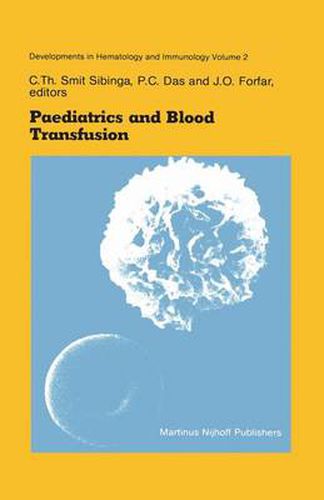Readings Newsletter
Become a Readings Member to make your shopping experience even easier.
Sign in or sign up for free!
You’re not far away from qualifying for FREE standard shipping within Australia
You’ve qualified for FREE standard shipping within Australia
The cart is loading…






This title is printed to order. This book may have been self-published. If so, we cannot guarantee the quality of the content. In the main most books will have gone through the editing process however some may not. We therefore suggest that you be aware of this before ordering this book. If in doubt check either the author or publisher’s details as we are unable to accept any returns unless they are faulty. Please contact us if you have any questions.
The practice of transfusing blood started at the bedside but over the last few decades blood transfusion has become more and more a laboratory directed discipline. The emphasis on serology and laboratory controlled measures has made blood transfusion safer and more effective, but laboratory and clinical aspects of the discipline have tended to become increasingly separated. As a result of this separation clinical developments in blood transfusion may not have derived full benefit from the knowledge accrued in blood transfusion services. Over the last five years the Red Cross Blood Bank Groningen-Drenthe has organised yearly symposia with a clinical theme in order to bring blood banks and clinicians closer together. Many of the recent major advances in clinical medicine have been based on developments in blood transfusion practice. This is certainly true for paediatric medicine. For instance, in paediatric oncology, including leukemia, cell separator programmes have made available new forms of support. Further, blood component therapy has provided an effective means of control in some of the bleeding disorders of children. Some of these topics are discussed in this symposium dealing with intensive care. Haemolytic disease of the newborn and exchange transfusion are other aspec.ts of intensive care. Our purpose in dealing with them was twofold.
$9.00 standard shipping within Australia
FREE standard shipping within Australia for orders over $100.00
Express & International shipping calculated at checkout
This title is printed to order. This book may have been self-published. If so, we cannot guarantee the quality of the content. In the main most books will have gone through the editing process however some may not. We therefore suggest that you be aware of this before ordering this book. If in doubt check either the author or publisher’s details as we are unable to accept any returns unless they are faulty. Please contact us if you have any questions.
The practice of transfusing blood started at the bedside but over the last few decades blood transfusion has become more and more a laboratory directed discipline. The emphasis on serology and laboratory controlled measures has made blood transfusion safer and more effective, but laboratory and clinical aspects of the discipline have tended to become increasingly separated. As a result of this separation clinical developments in blood transfusion may not have derived full benefit from the knowledge accrued in blood transfusion services. Over the last five years the Red Cross Blood Bank Groningen-Drenthe has organised yearly symposia with a clinical theme in order to bring blood banks and clinicians closer together. Many of the recent major advances in clinical medicine have been based on developments in blood transfusion practice. This is certainly true for paediatric medicine. For instance, in paediatric oncology, including leukemia, cell separator programmes have made available new forms of support. Further, blood component therapy has provided an effective means of control in some of the bleeding disorders of children. Some of these topics are discussed in this symposium dealing with intensive care. Haemolytic disease of the newborn and exchange transfusion are other aspec.ts of intensive care. Our purpose in dealing with them was twofold.